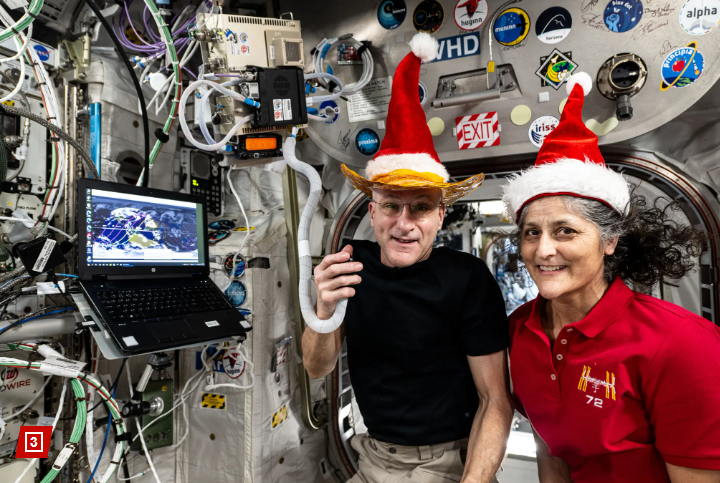NASA astronauts Sunita Williams and Barry “Butch” Wilmore, who have been aboard the International Space Station (ISS) since June 2024, will remain stranded in orbit until at least late March 2025 following a critical failure of Boeing’s Starliner spacecraft. Originally planned as an eight-day mission, the astronauts’ stay has been extended by nearly a year due to significant technical malfunctions that rendered their return vehicle unsafe.
The Starliner’s Malfunction
The Boeing Starliner spacecraft encountered multiple issues during its approach to the ISS. Five of the craft’s 28 thrusters failed, and its propulsion system experienced helium leaks, raising serious concerns about its ability to safely return the astronauts to Earth. NASA quickly determined that the spacecraft was unsuitable for re-entry, forcing the astronauts to remain on the station until an alternative plan could be developed.
The Starliner program, a key component of NASA’s Commercial Crew Program, has faced repeated setbacks since its inception. Initially scheduled to be operational by 2017, the spacecraft has been plagued by delays and technical difficulties. This latest incident has further highlighted the challenges Boeing faces in meeting NASA’s safety and reliability standards.
NASA and SpaceX to the Rescue
To address the issue, NASA has coordinated with SpaceX to facilitate the astronauts’ return. The current plan involves the launch of the Crew-10 mission in late March 2025, utilizing a newly developed Dragon spacecraft. This timeline allows SpaceX to complete the design, fabrication, assembly, and testing of the new capsule to ensure it meets NASA’s stringent safety requirements.
Steve Stich, manager of NASA’s Commercial Crew Program, commented on the effort: “Fabrication, assembly, testing, and final integration of a new spacecraft is a painstaking endeavor that requires great attention to detail. We appreciate the hard work by the SpaceX team to expand the Dragon fleet in support of our missions and the flexibility of the station program and expedition crews as we work together to complete the new capsule’s readiness for flight.”
Health Concerns for the Astronauts
The extended mission raises concerns about the physical and mental well-being of the astronauts. Prolonged spaceflights can lead to health issues such as bone density loss, muscle atrophy, cardiovascular strain, and psychological challenges. NASA has assured the public that the ISS is well-stocked with supplies and that its team is experienced in managing long-duration missions to mitigate these risks.
Williams and Wilmore are veteran astronauts with extensive experience in space, and they have continued to conduct scientific experiments and maintenance tasks aboard the ISS despite the unplanned extension of their stay.
Implications for Boeing and the Space Industry
This incident has further damaged confidence in Boeing’s Starliner program, which has long struggled to meet expectations. The Starliner was meant to be a competitive alternative to SpaceX’s Dragon spacecraft under NASA’s Commercial Crew Program. However, repeated technical failures and delays have caused significant setbacks, with SpaceX emerging as the more reliable partner.
The situation also underscores the challenges of human spaceflight and the importance of robust testing and redundancy in spacecraft systems. As NASA and its commercial partners work to resolve these issues, the agency remains committed to ensuring astronaut safety and advancing its goals in low-Earth orbit and beyond.
Looking Ahead
The Crew-10 mission is set to launch in March 2025, marking the next critical step in bringing Williams and Wilmore home safely. Until then, NASA will continue to monitor their health and well-being, ensuring that all necessary resources are available to support their extended stay.
This incident serves as a reminder of the complexities of space exploration and the critical importance of collaboration, innovation, and safety in advancing humanity’s presence beyond Earth. For Boeing, the pressure is mounting to address the Starliner program’s shortcomings and restore confidence in its capabilities.


